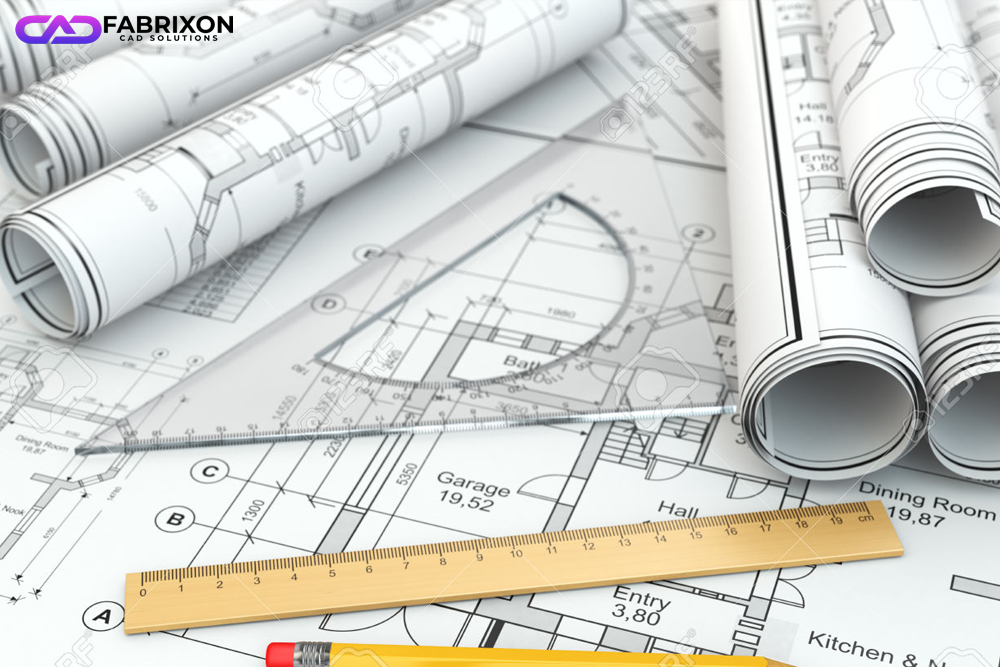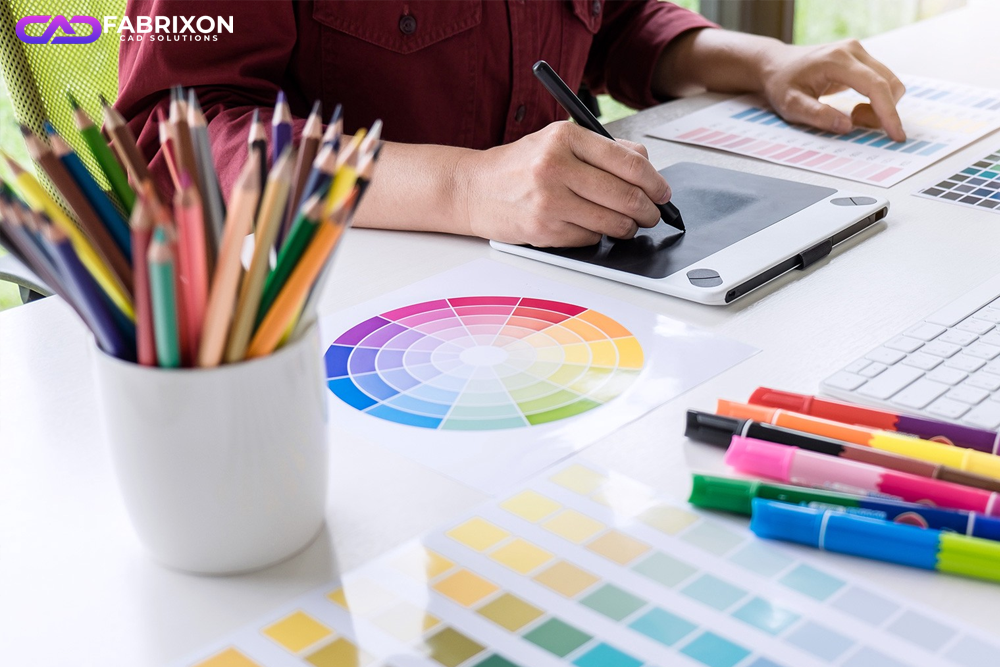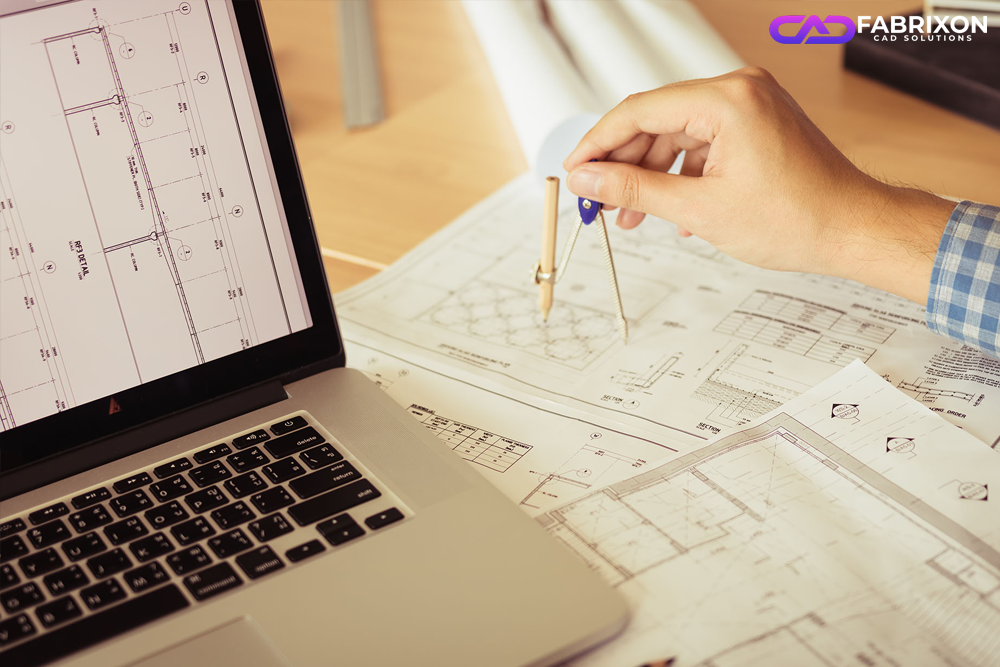Are you searching to complete your draftings and drawings but do not know what to do? Still in search of whether to make drafts or designs? Then just don’t worry, this post is for you. You can easily see the difference between both of them. Let’s read more to know about it.
Introduction to Drafting and Designing:
Drafting and designing are foundational architectural, engineering, and product development procedures. Although often utilized interchangeably, they interpret clear-cut stages of creation with unusual intentions and skill sets. Drafting concentrates on producing exact technical drawings, although designing needs conceptualizing modern thoughts to resolve problems. This article will explain the difference between them, their applications, roles and more.
What is Drafting?
Drafting is the abstract procedure of making elaborate, precise drawings or patterns that guide building constructions, machinery, or products. Frequently referred to as technological drafting or CAD blueprinting, it interprets an abstract design into important, similar plans. Drafting sticks to industry criteria like the Australian Standards (AS 1100) or ISO to assure abidance and clarity.
Read More: What is Drafting?
Tools and Software Used in Drafting:
Drafting trusts heavily on specified tools and software systems to attain precision. The tools used are:
- Computer-Aided Design (CAD) Software: Programs such as AutoCAD, Revit, and SolidWorks enable drafters to make elaborate 2D and 3D drawings.
- T-squares and Protractors: Standard tools still utilized in manual drafting for accurate measurements.
- Building Information Modelling (BIM): Tools such as ArchiCAD help incorporate drafting with functional and service coordination.
These tools assure that drafting outturns, specified as construction drawings and constructive details, are precise and make for practical execution.
Common Roles and Responsibilities of Drafters:
Drafters are technological experts who:
- Make careful floor plans, elevations, and segment drawings.
- Determine material demands, specified as sustainable timber cladding or precast concrete boards.
- Assure abidance with rules.
- Acquire as-built certification to reflect on-the-spot changes.
- Cooperate with designers and engineers to fine-tune abstract details, specified as beam sizes or plumbing system layouts.
Drafters often work under the direction of designers or architects, concentrating on technological accuracy instead of creative ideation.
What is Designing?
Designing is the constructive procedure of conceptualizing a product, construction, or system. It needs figuring out the general aesthetic, functionality, and user experience although dealing with client needs, sustainability, and feasibility. Designing is less about technological precision and more about creation, problem-solving, and making a sight that lines up with project goals.
Read More: Product Design and Development
Tools and Methods Used in Designing:
Designers utilize a range of instruments and techniques to bring their ideas to life:
- Sketching Pencils and Concept Sketches: Utilized for initial brainstorming and visualization.
- 3D Modeling Software: Instruments such as SketchUp or Adobe Creative Suite make realistic renderings and images.
- Mood Boards and Virtual Walkthroughs: Assist clients in projecting spatial psychology and material textures.
Designers as well utilize design thinking rules, repeating through images and feedback to fine-tune their concepts.
Core Skills of a Designer:
Designers mix creative thinking, conception, and analytical skills to craft unusual, functional solutions. They employ knowledge of individual factors, spatial psychology, and sustainability rules such as peaceful solar design or BASIX adherence, although leveraging materials skills for appropriate material options. Effective communication enables good collaboration with customers and stakeholders, assuring projects cope with both aesthetic and operational goals during the vision-setting stage.
Drafting vs Designing: A Side-by-Side Comparison
Functional Objectives and Output:
Drafting needs producing accurate technical drawings, specified as floor plans and segment drawings, with elaborated measurements and material specs, producing structure drawings and as-built certification essential for manufacturing or building up. Designing concentrates on conceptualizing aesthetically pleasing and operational solutions, giving up concept sketches, 3D renderings, and overture plans that guide the drafting procedure.
Workflow and Process Differences:
Designing generally leads to drafting in the project timeline:
- Designing: It starts with site analytic thinking, client consultations, and abstract sketches. It needs an iterative finish through 3D modeling and customer feedback, climaxing in a finalized pattern.
Drafting: Starts after the pattern is sanctioned, interpreting concepts into elaborated drafts utilizing CAD software. Drafters concentrate on technical accuracy, assuring abidance with criteria.
Education, Training & Certification:

Drafting
This requires specialized training, often through vocational plans or two-year degrees in CAD drafting. Certifications such as Certified SolidWorks Associate (CSWA) enhance employability. Drafters require technique in CAD tools and knowledge of building codes.

Designing
A degree in architecture, applied science, or design, specified as a Master’s of Architecture, is generally required. Designers might pursue certifications such as Certified Graphic Designer from Adobe Creative Suite.
Who Does What in Real-World Projects?
In real life, different roles are given according to the projects.
- Small Projects: An individual expert might handle both drafting and designing, particularly interior design or easy redevelopments.
Complicated Projects: Big architecture or engineering science projects, such as commercial architecture. Designers fix the vision, although drafters get construction-ready drawings.
When Should You Hire a Drafter or a Designer?
Project Types and Budget Considerations:
Choosing between a drafter and a designer depends on the project scope:
For easy projects like small redevelopments or pre-designed designs, a drafter can cost-effectively create accurate construction drawings, concentrating on technical details specified as plumbing system layouts or electric distribution. In contrast, complicated projects like customized residential architecture or commercialized developments need a designer, specified as an architect, to make a sight that mixes aesthetics, sustainability, and restrictive demands, specified as heritage covers. However, this affects higher budgets due to the originative and important input needed.
Collaboration Between Drafting and Designing Roles:
There are different and effective projects that need collaboration, such as:
- Designers allow the constructive vision, which is specified as unrestricted living sets up or sustainable material options.
- Drafters transform these into accurate drafts, assuring particulars like functional connections or service coordination are exact.
Drafting and Designing in Architecture, Engineering, and Product Development:
In architecture, designing requires making site-responsive designs, although drafting brings out elaborated drawings for council recommendations. In engineering science, designers introduce systems such as HVAC, although drafters detail specs for manufacture. In product development, designing concentrates on user experience, and drafting assures manufacturability through accurate schematics. Both procedures are vital in these areas, with CAD and BIM bridging the gap.
Benefits of Understanding the Difference in Your Projects:
There are a lot of benefits of understanding the difference between drafting and designing, such as:
- It clearly defines roles that prevent extra work, specified as redrafting due to early documentation.
- You can easily allocate budgets suitably, which maximizes the value.
- Designers heighten aesthetics and functionality, although drafters assure precision, producing high-quality results.
- Designers handle rules like BASIX, although drafters assure drawings meet criteria.
Common Myths About Drafting and Designing:
↦ Myth 1: Drafting and designing are the same.
Reality: Designing is original and abstract; drafting is technological and elaborated.
↦ Myth 2: You just require drafting for easy projects.
Reality: Still basic projects do well from design to assure functionality and aesthetics.
↦ Myth 3: Designers do not require technological skills.
Reality: Designers frequently utilize CAD for 3D modeling and must infer technical restraints.
Frequently Asked Questions(FAQ's)
Q1. Can a drafter also be a designer?
Yes, in minor projects or firms, an individual professional might deal with both drafting and designing, particularly with techniques in CAD tools like AutoCAD or SketchUp. Even so, bigger projects generally need specialized roles due to the distinct skill sets needed.
Q2. Do I need both drafting and designing services?
It depends on the project. Easy renovations might just require drafting for technological drawings, although complicated projects, like heritage renovations or commercialized architecture, need designing for vision and restrictive adherence, followed by drafting for performance.
Q3. How much does each service typically cost?
Costs may be different depending on project scope and location. For accurate pricing, contact suppliers like Cad Crowd for drafting or confer with architecture firms for designing prices, as they devolve on project complexity and territorial factors.
